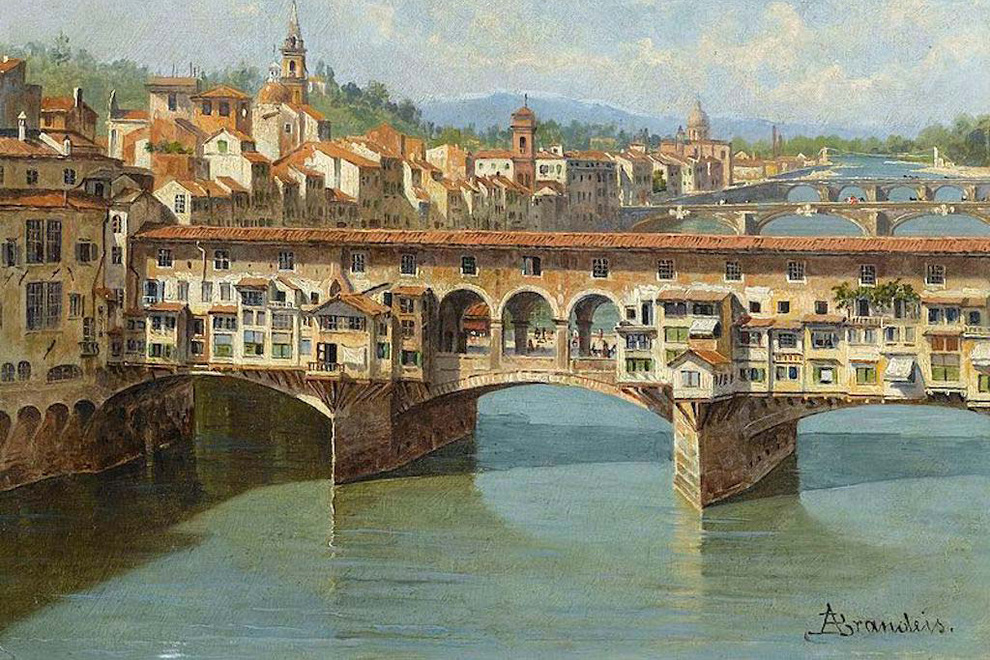
Florence: arts and crafts, and stately homes
Art, science, and handicraft in Tuscany’s capital city
Among the many art cities scattered in Tuscany, Florence is one of the most renowned and visited. There are many interesting stories around the art forms and artists which are the fabric of the city’s history. Broker Immobiliare Exclusive Real Estate lists luxury properties in the countryside out of Florence, just over half an hour from the rich cultural and historical context of this renowned art city.
Jewelers flank the Ponte Vecchio on both sides and are the only kind of business on this historic bridge. It is hard to choose where to start looking at the jewelry displayed in the shop windows. Not only luxury brands such as Cartier, Tiffany, and Fabergé are sold but also artisanal jewelry. There is a very interesting story behind the reason for jewelers being the only business on the bridge. In the late 1200s, the bridge had many bottegas such as butchers, fishmongers, and tanneries. Such businesses were there until the late 1500s, when Ferdinando I de’ Medici decreed that, for the sake of decorum, these “arti vili” (“vile arts”) were to move from the bridge. Waste materials from these bottegas weren’t pleasant to the smell, and the odors reached the Vasari Corridor, through which the Medici family went across the bridge.
As well as goldsmithing, Florence also has a historic tradition of artisanal tanning, which was surely facilitated by the proximity of the Arno. The river was an endless supply of water necessary for the tanning process as well as convenient to sail to other cities known for tannery, such as Pisa. The Arte dei Cuoiai law dates back to the late 1200s. Its regulations dictated very high-quality standards and harsh penalties for non-compliers. Some street names, such as Via dei Conciatori (tanners) and Via della Concia (tannery) are a reminder of the impotance of artisanal tannery in the history of Florence.
As an art city, Florence doesn’t lack inventions in this field. Here, Brunelleschi, Donatello, and Masaccio started experimenting with one-point perspective, also called linear perspective. More precisely, it was Brunelleschi to have created perspective panels for a more realistic depiction of a bidimensional image. This technique strongly influenced Masaccio’s work. Donatello also created reliefs with this technique, and he is thought to have contributed to Brunelleschi’s discovery.
Florentine inventions by artists aren’t limited to the realm of painting and sculpting. Bernardo Buontalenti (1531–1608) studied under Vasari and was a multitalented artist. He was an architect, sculptor, painter, military engineer, and stage designer. However, he is mostly remembered for having invented cream-flavored ice cream. The inspiration for this invention came to Buontalenti from the Spanish ambassador’s visit to the Medici family, the latter ordering Buontalenti to organize “feasts that will stun the foreigners”. He took the opportunity to experiment with his creativity and thus invented this dessert using milk, honey, eggs, and some wine.
One can't talk about Florence and inventions without mentioning Leonardo Da Vinci. This multitalented genius spent many years of his life in Florence in two different occasions. His inventions are more like “predictions” of machinery which would have been possible to build only centuries after his time, such as the helicopter, which he called “vite aerea” (“aerial screw”). Da Vinci also designed a funny looking, pyramid shaped parachute which was successfully tested in 2000: the descent was deemed safer than the one provided by a modern parachute. However, the wooden frame at the base of the pyramid was deemed potentially unsafe at landing due to its weight.
Broker Immobiliare Exclusive Real Estate lists luxury properties in the countryside out of Florence, in locations with easy access to this historic city worth discovering.
